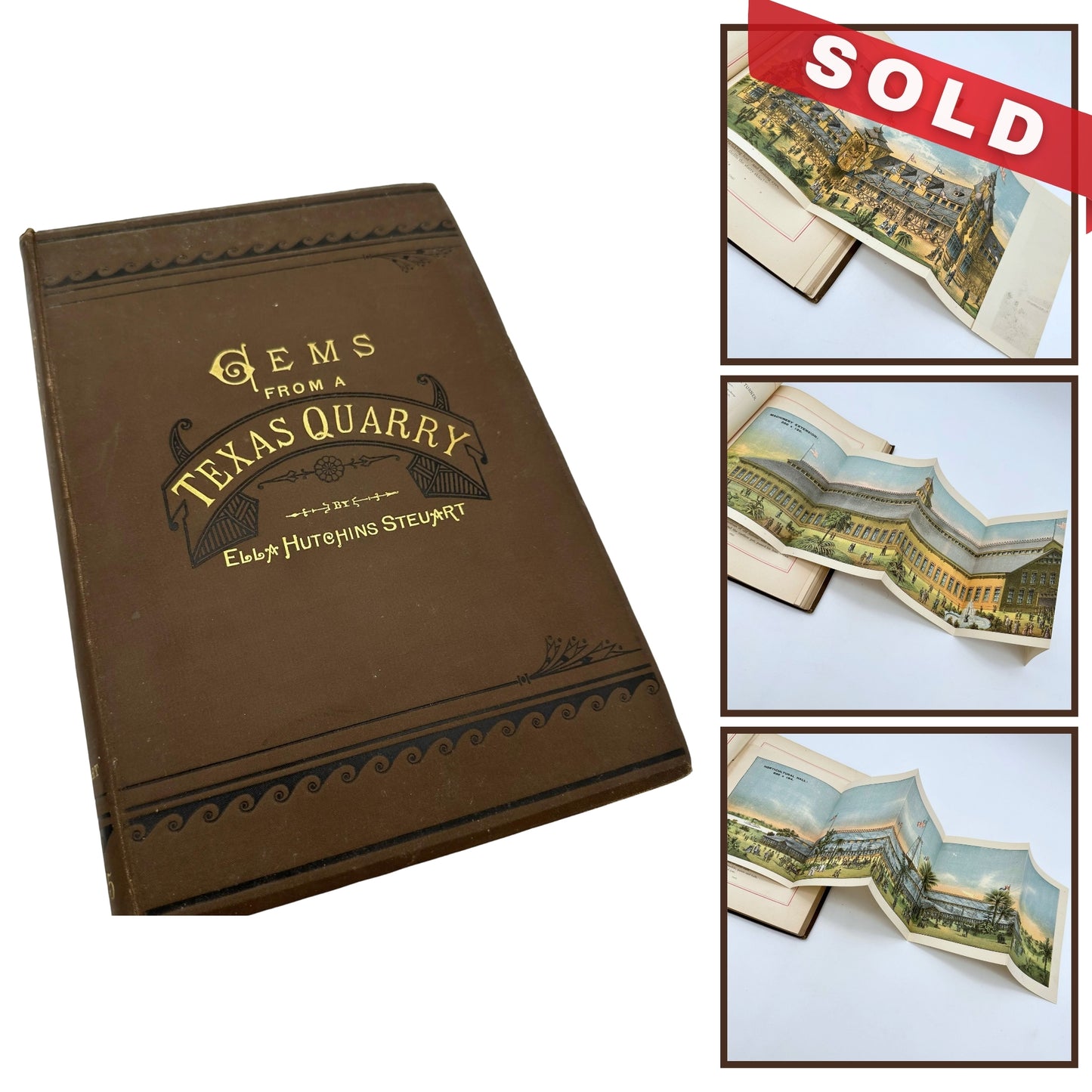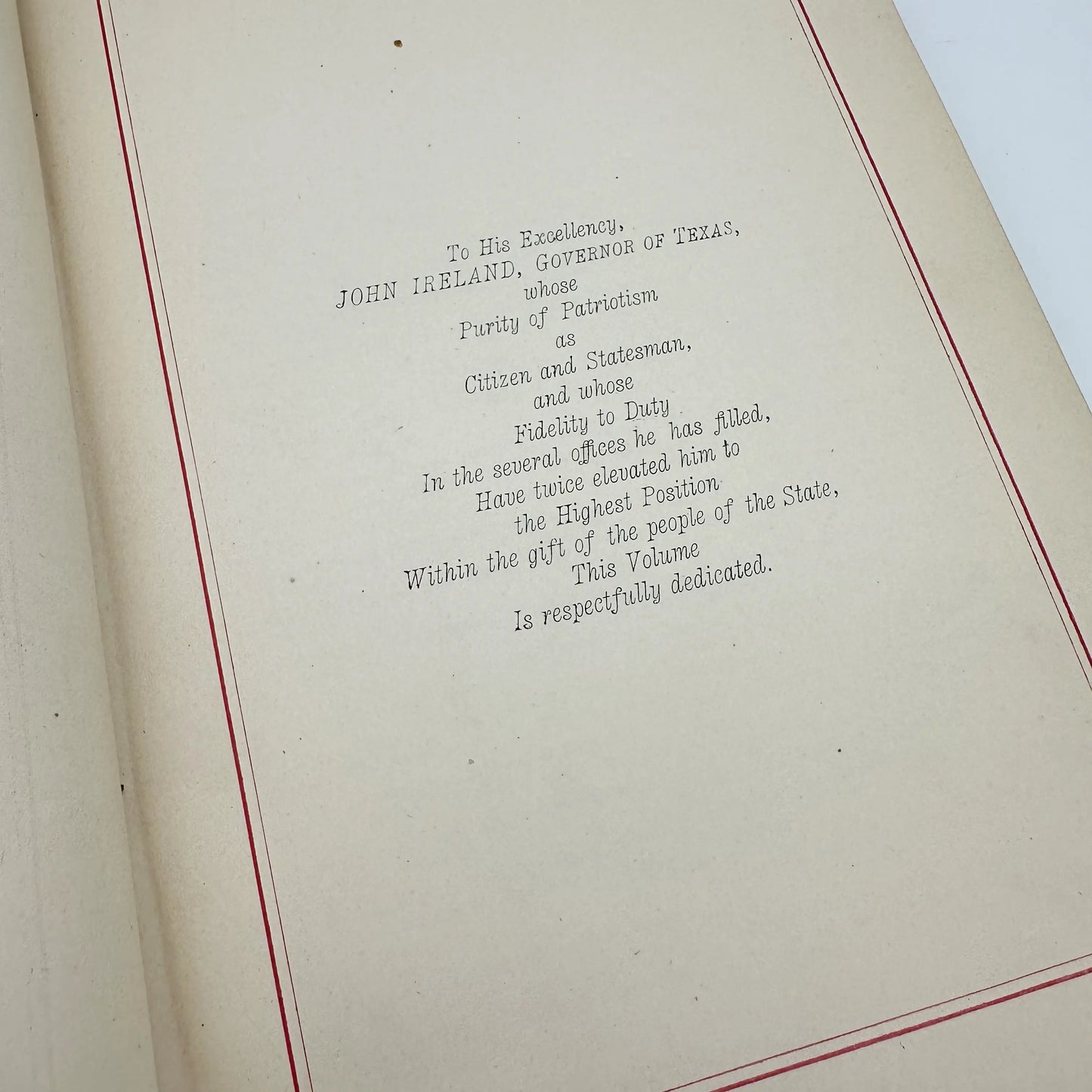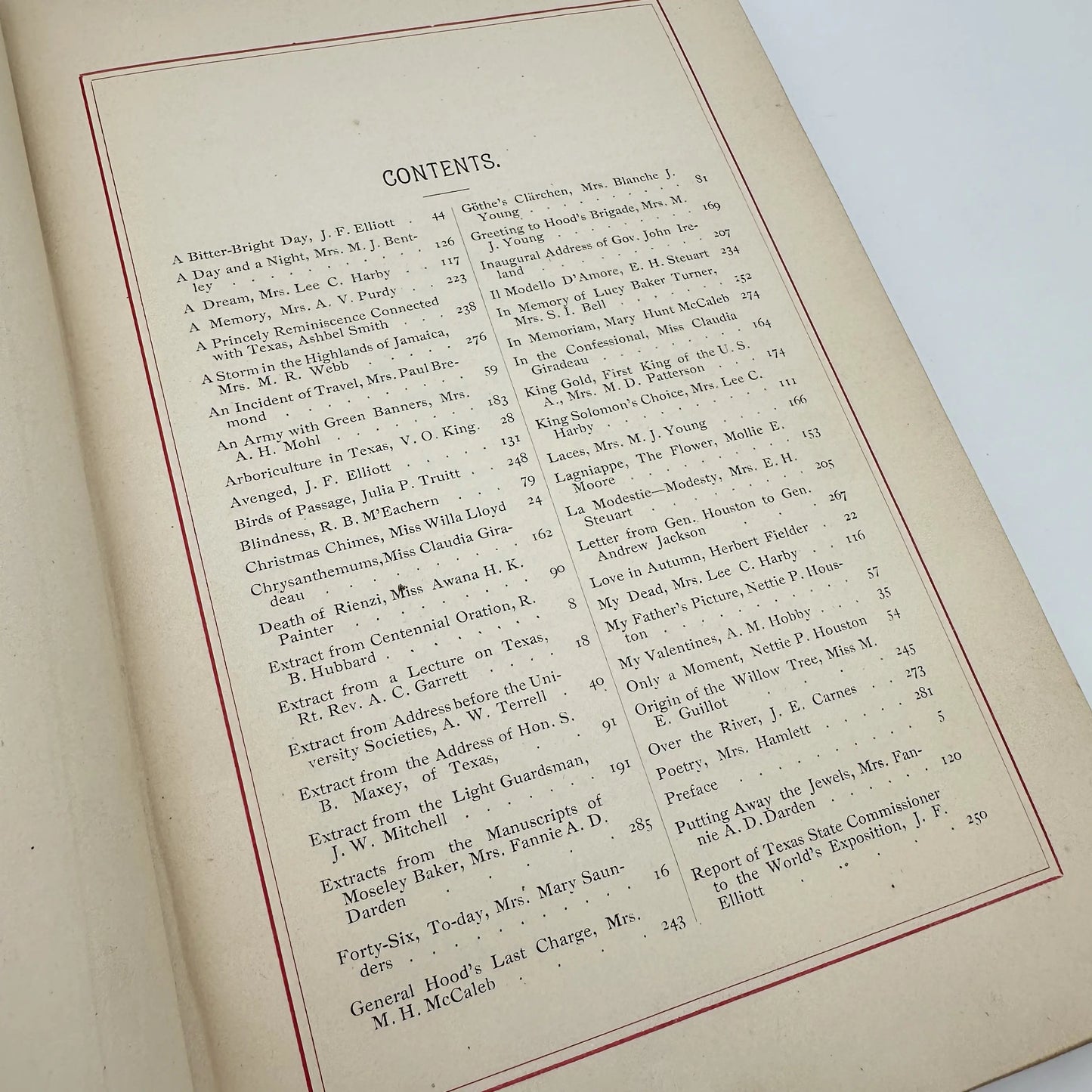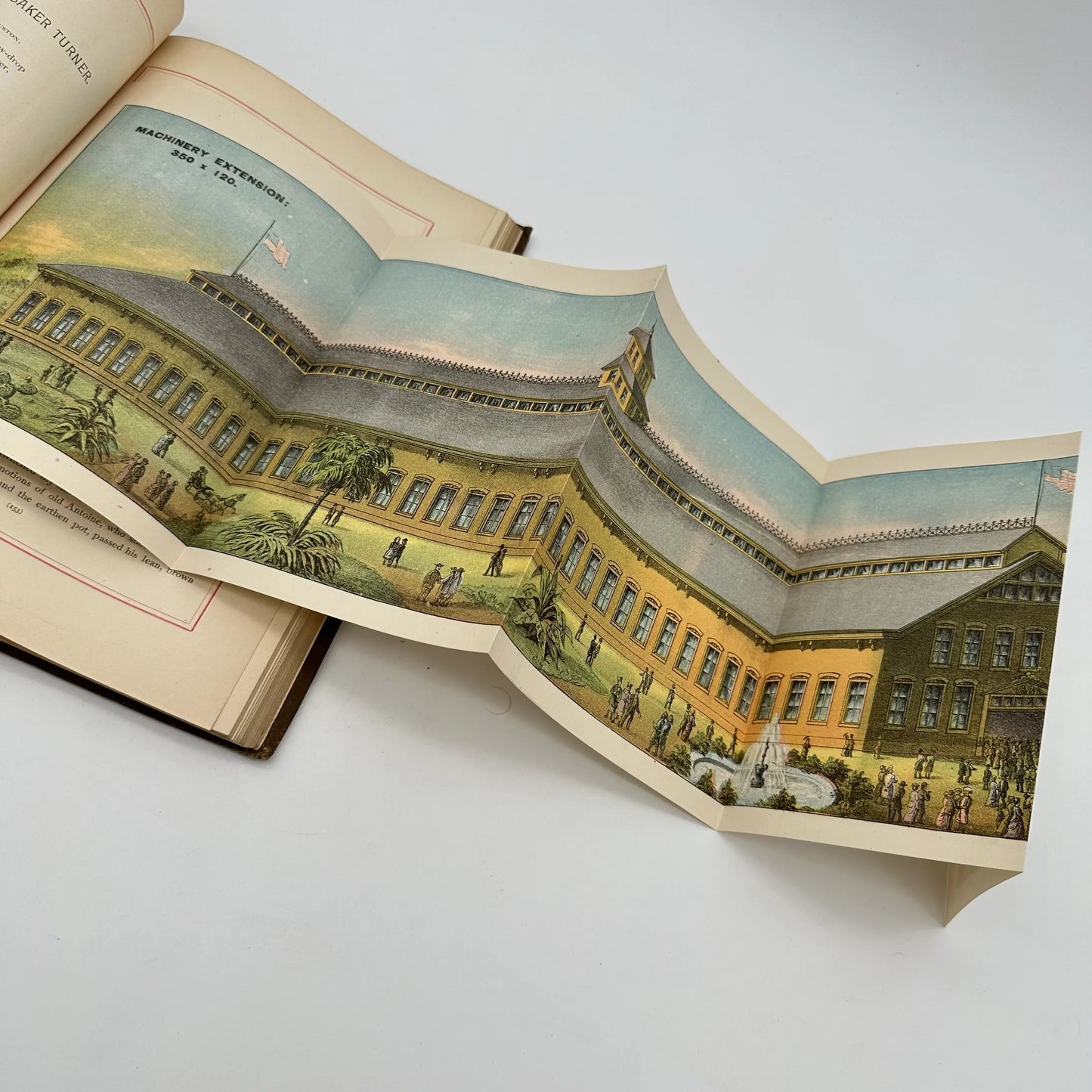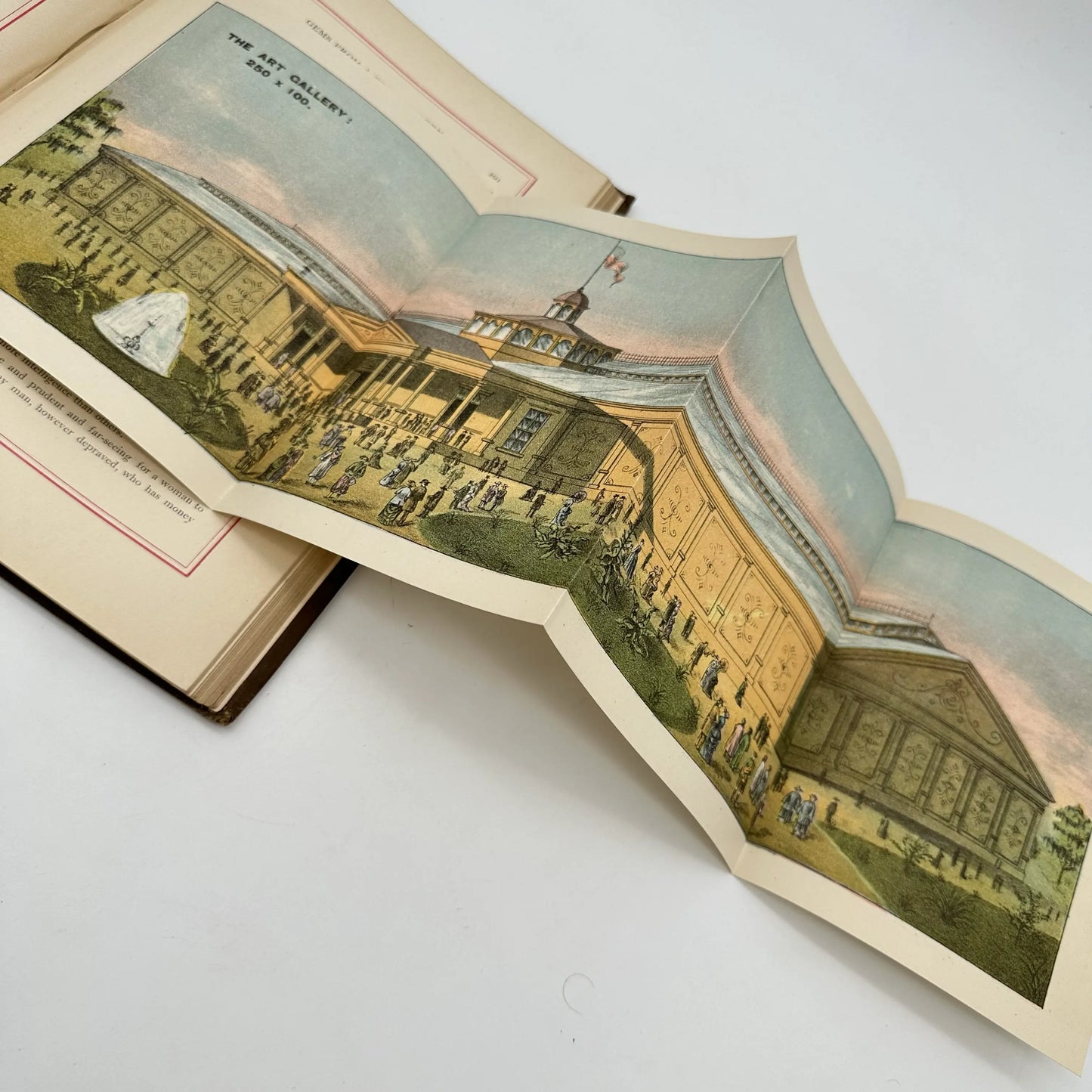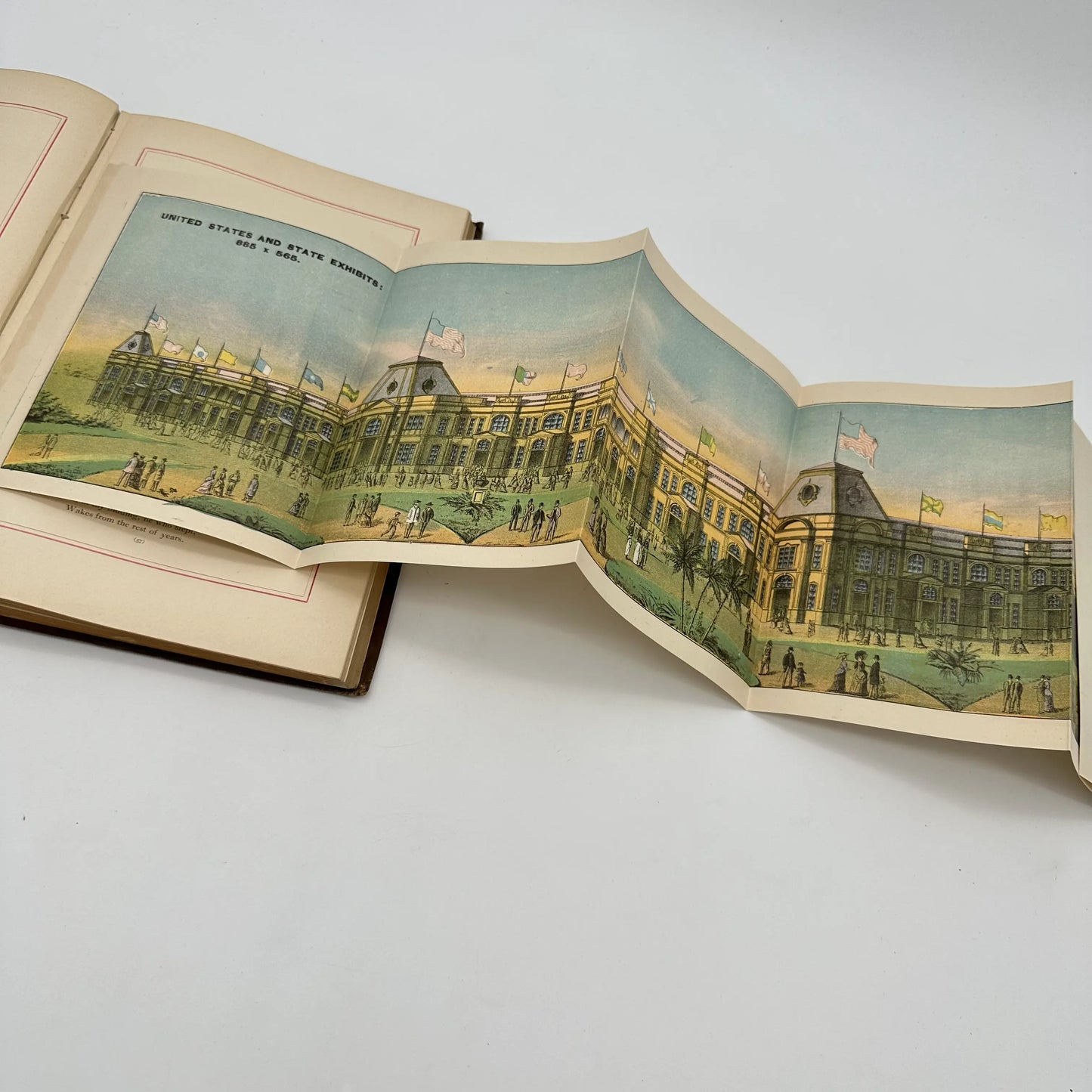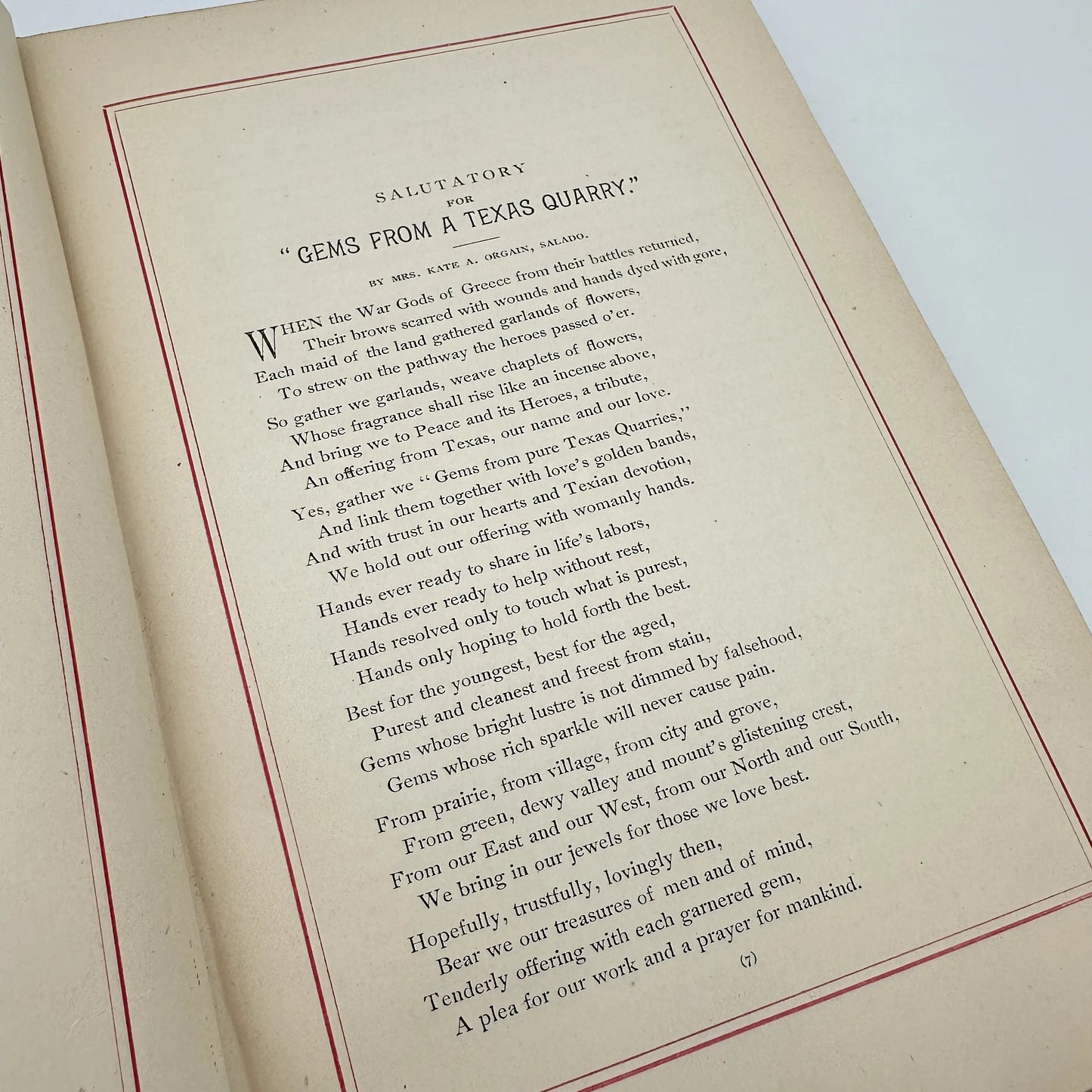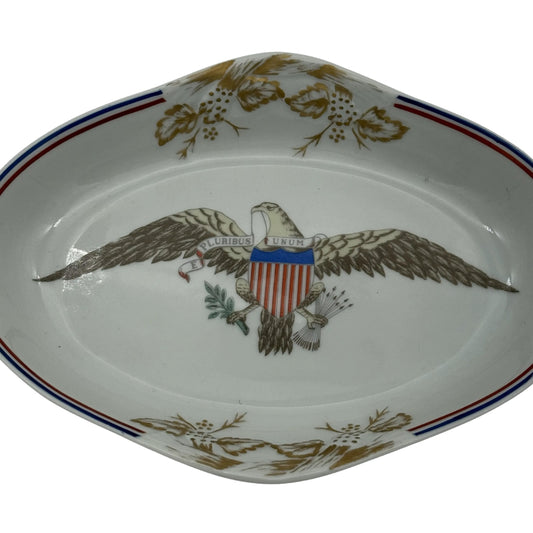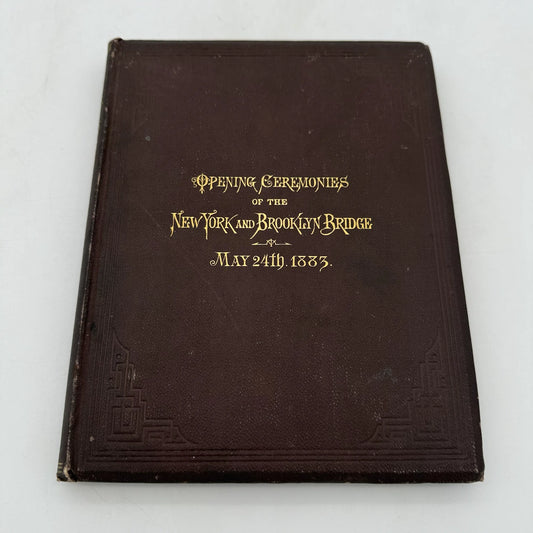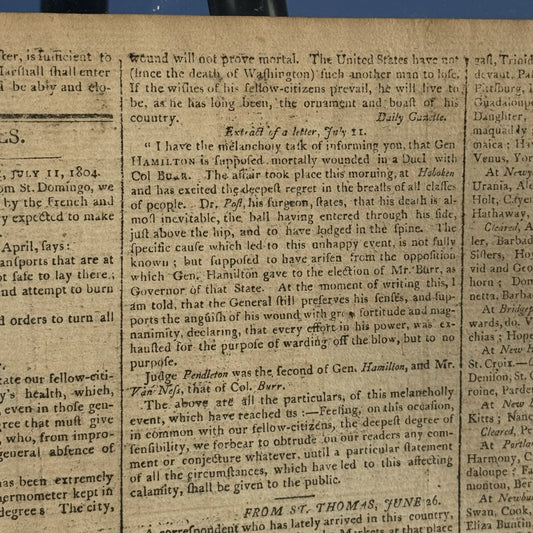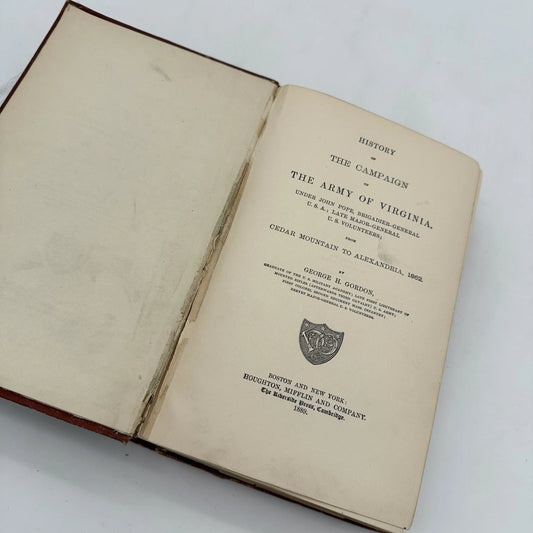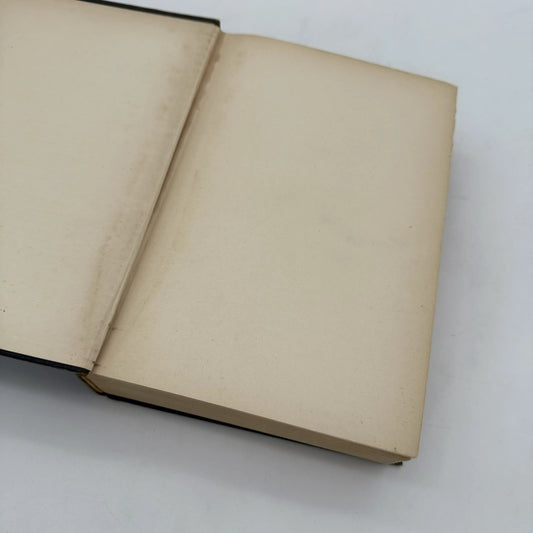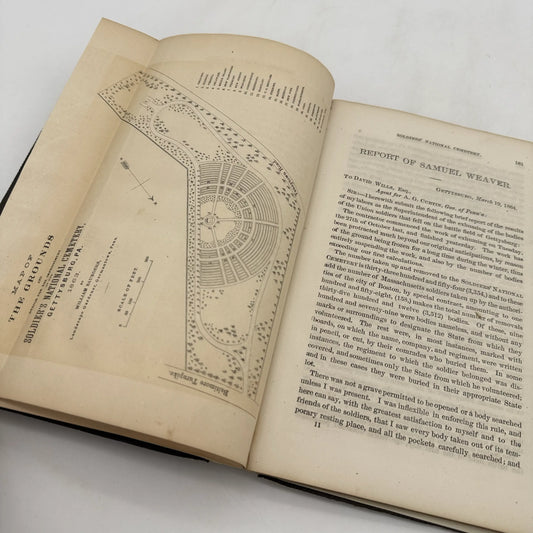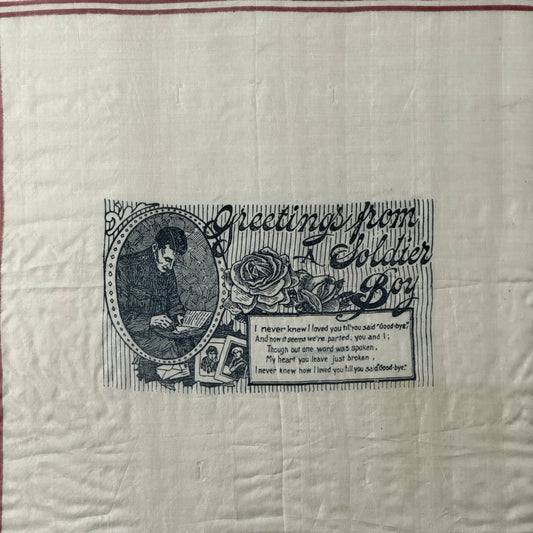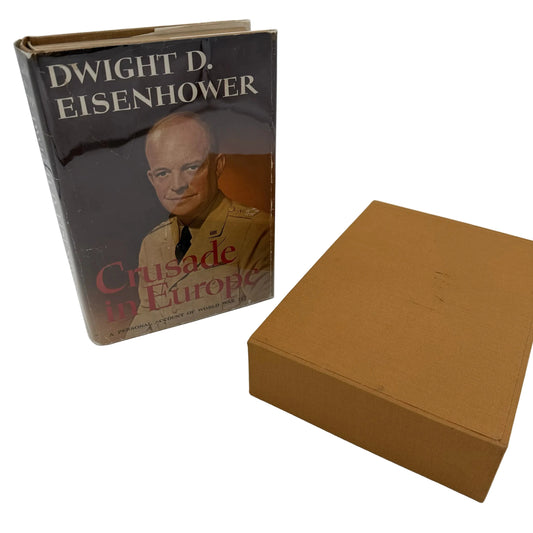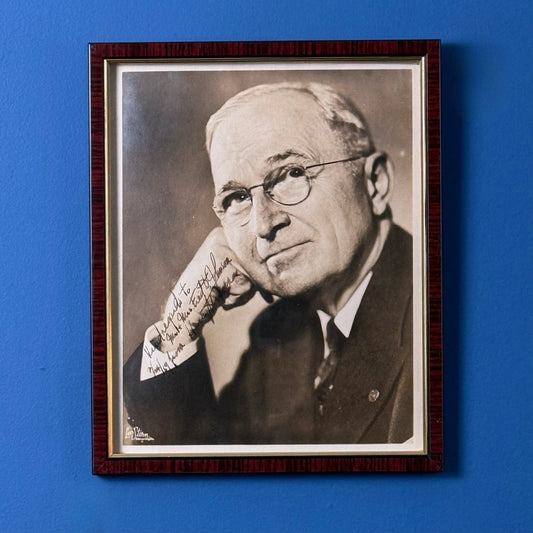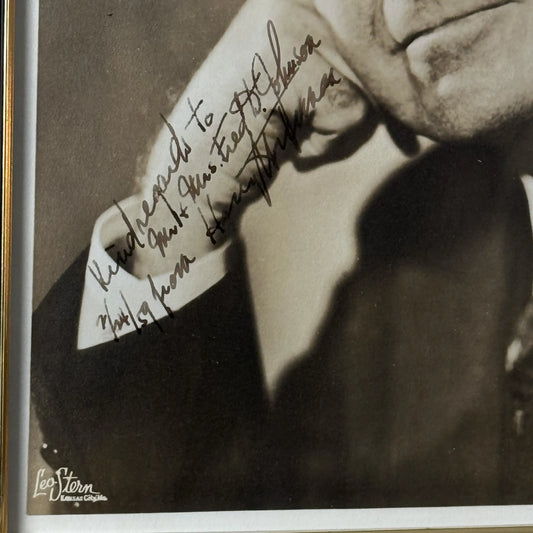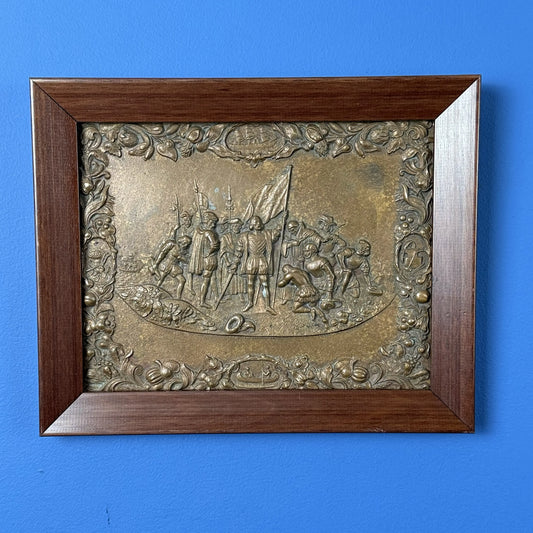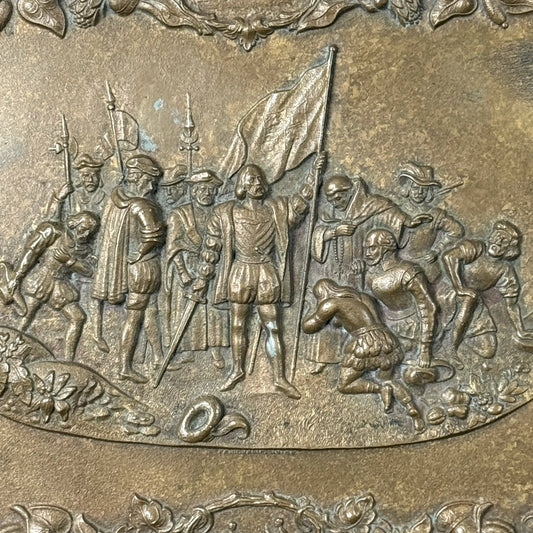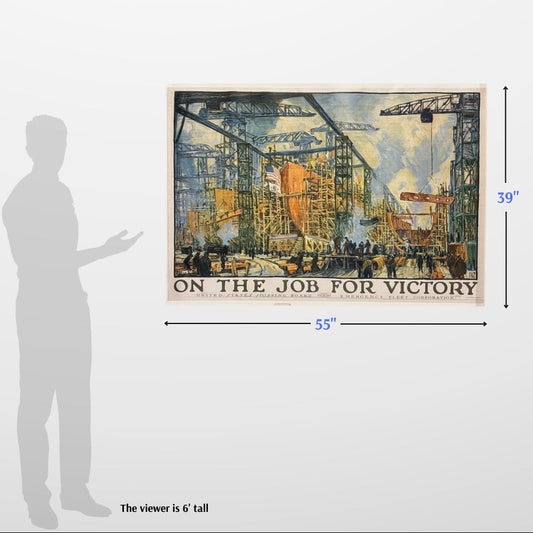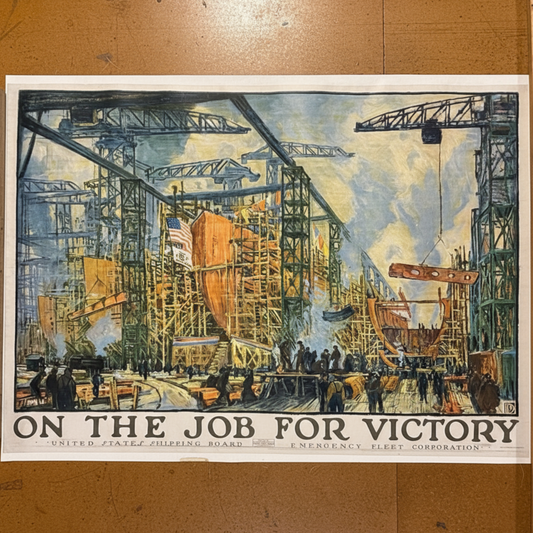1885 "Gems from a Texas Quarry" — 300 pp. — Includes six large foldouts —for the World's Industrial Exposition
1885 "Gems from a Texas Quarry" — 300 pp. — Includes six large foldouts —for the World's Industrial Exposition
Update July 26: This has been sold.
"Gems from a Texas Quarry: or, Literary Offerings by and Selections from Leading Writers and Prominent Characters of Texas: Being a Texas Contribution to the World's Industrial Exposition at New Orleans, LA., 1884-5." by Ella Hutchins Steuart. Published in New Orleans: J.S. Rivers, 1885.
300 pp.
Illustrated with six folding chromolithographed plates, some 24" wide and all in excellent condition.
- Main Building;
- United States and State Exhibits;
- Horticultural Hall;
- Machinery Extension;
- The Art Gallery;
- and Mexican National Exhibits.
Ours is in excellent condition. The one that Christie's sold in 2005 and that sounds like it was in similar condition, went for $1,020. Ours is quite a bargain.
Shipping: $5.95. Please allow two weeks for shipping.
Historical background on the World Cotton Centennial, also referred to as the World's Industrial and Cotton Centennial Exposition
At a time when nearly one third of all cotton produced in the United States was handled in New Orleans and the city was home to the New Orleans Cotton Exchange, the idea for the fair was first advanced by the Cotton Planters Association. The name "World Cotton Centennial" referred to the earliest-surviving record of export of a shipment of cotton from the U.S. to England in 1784.
The U.S. Congress lent $1 million to the fair's directors and gave $300,000 for the construction of a large U.S. Government & State Exhibits Hall on the site. However, the planning and construction of the fair was marked by corruption and scandals, and state treasurer Edward A. Burke absconded abroad with some $1,777,000 of state money including most of the fair's budget. . . .
The Centennial covered 249 acres, stretching from St. Charles Avenue to the Mississippi River, and was notable in that it could be entered directly by railway, steamboat, or ocean-going ship. The main building enclosed 33 acres and was the largest roofed structure constructed up to that time. It was illuminated with 5,000 electric lights (still a novelty at the time, and said to be ten times the number then existing in New Orleans outside of the fairgrounds). There was also a Horticultural Hall, an observation tower with electric elevators, and working examples of multiple designs of experimental electric street-cars. The Mexican exhibit was particularly lavish and popular, constructed at a cost of $200,000, and featuring a huge brass band that was a great hit locally.
On December 16, 1884, U.S. President Chester Arthur opened the fair via telegraph (two weeks behind schedule).[1] It closed on June 2, 1885. In an unsuccessful attempt to recover some of the financial losses from the Fair, the grounds and structures were reused for the North Central & South American Exposition from November 10, 1885, to March 31, 1886, with little success. After this, the structures were publicly auctioned off, most going only for their worth in scrap.
The site today is Audubon Park and Audubon Zoo in Uptown New Orleans.
Made by America
Made by America
Almost all of the new products we offer are designed by us and made in America and most of our Rare Finds were made in America.
Our original designs are based on our nation’s history and our love of American history. Read more about other things we've created, including The History List, History Camp, and The Pursuit of History, in addition to The History List Store.
Every product that is made in America states that in the product description and includes the "Made in U.S.A." graphic.
